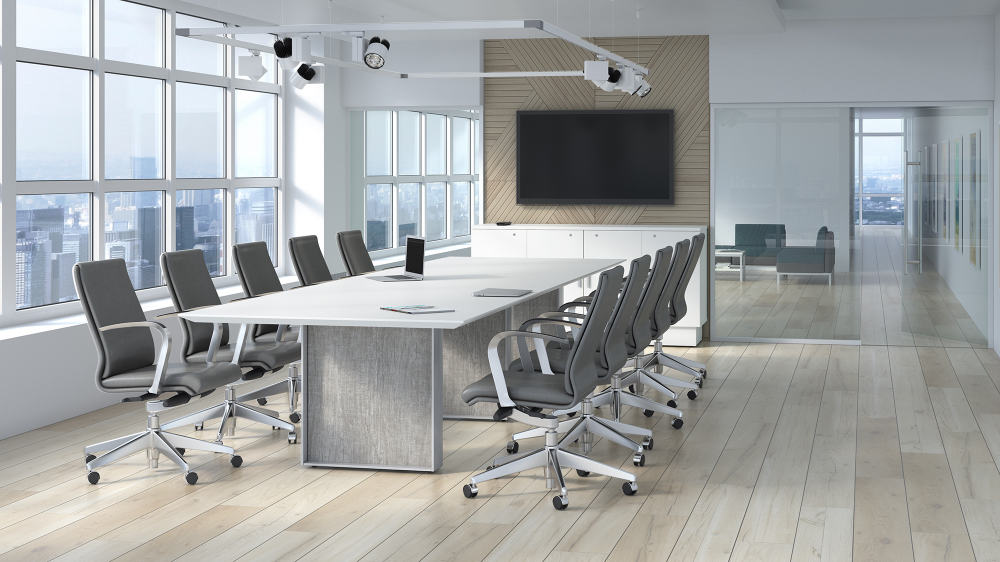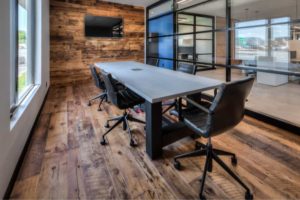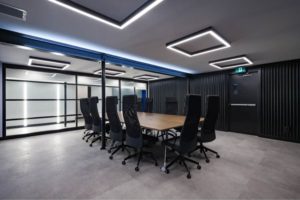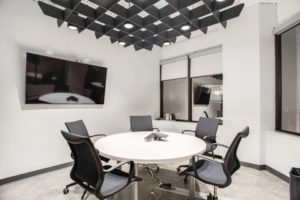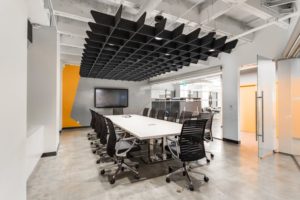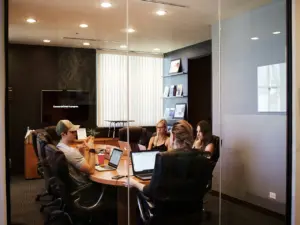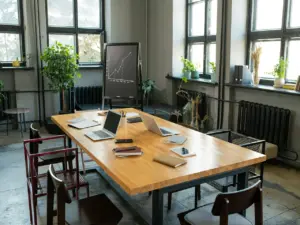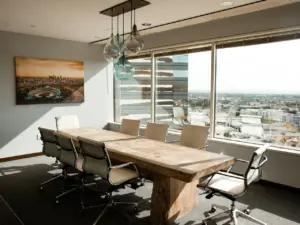The boardroom is more than just a meeting space—it’s the beating heart of a company, where big decisions are made, ideas take shape, and strategies come to life. Once reserved for executives and high-stakes discussions, today’s boardrooms have evolved into modern office design spaces for collaboration, innovation, and productivity. If you’re hosting a crucial client meeting, brainstorming with your team, or presenting to stakeholders, having the right setup can make all the difference.
A well-designed boardroom isn’t just about aesthetics; it plays a vital role in ensuring seamless communication, fostering creativity, and keeping everyone engaged. As part of a comprehensive modern office design strategy, your boardroom should integrate cutting-edge technology, ergonomic furniture, and branding elements that align with your company’s vision. So, what exactly does a modern boardroom need to be functional, efficient, and inspiring? Let’s break it down.
Must-Have Technology for a Smart Boardroom
Technology is at the core of any high-performing boardroom. It enhances efficiency, improves communication, and ensures that meetings run smoothly—whether in person or virtually. Here are some tech essentials every boardroom should have:
Interactive Displays & Smart Whiteboards
Gone are the days of scribbling on traditional whiteboards with markers that barely work. Smart whiteboards and interactive displays allow real-time collaboration, screen sharing, and digital note-taking. They let teams visualize ideas better, annotate documents on the fly, and even save discussions for future reference—no more snapping pictures of half-erased notes! This technology is a key component of modern office design, ensuring streamlined workflows and enhanced engagement.
High-Quality Audio & Video Conferencing
With remote work and hybrid meetings becoming the norm, high-quality video and audio are non-negotiable. Investing in ultra-HD cameras, crystal-clear microphones, and noise-canceling speaker systems ensures that everyone—whether in the room or dialing in from miles away—can participate without tech hiccups. A seamless audiovisual setup is crucial for a modern office design that prioritizes collaboration and connectivity.
Wireless Connectivity & Seamless Screen Sharing
Tangled cables and complicated connections can kill the momentum of any meeting. A boardroom should have seamless wireless connectivity that allows team members to share their screens instantly, whether they’re using a laptop, tablet, or smartphone. Bonus points if you integrate voice control and AI-powered assistants for effortless navigation—hallmarks of a sophisticated modern office design.
Acoustic Treatments for Better Sound Clarity
A great boardroom isn’t just about what you see—it’s also about what you hear. Poor acoustics can make conversations hard to follow, especially in larger rooms. Acoustic panels, sound-absorbing materials, and strategic furniture placement can eliminate echoes and enhance clarity, making sure every word is heard loud and clear. Thoughtful sound management is a crucial element of modern office design, contributing to both aesthetics and functionality.
Ergonomic Seating for Long Discussions
If your meetings tend to run long, investing in ergonomic chairs is a must. Uncomfortable seating can lead to back pain, fidgeting, and distraction. Choose chairs with lumbar support, adjustable height, and breathable material to keep everyone focused and at ease—key considerations in a well-thought-out modern office design.
Adjustable & Modular Furniture
Boardrooms aren’t just for formal sit-down meetings anymore. They need to be adaptable for brainstorming sessions, team huddles, or even casual catch-ups. Modular tables and chairs that can be rearranged easily allow for a flexible setup that meets different needs. This kind of adaptability is essential for a modern office design that fosters creativity and efficiency.
Optimal Lighting for Focus & Engagement
Harsh fluorescent lights can be headache-inducing, while dim lighting can make the room feel sleepy. Aim for a mix of natural light and well-placed LED fixtures that reduce eye strain and create a welcoming atmosphere. Dimmable lighting options give you control over the ambiance, making the boardroom adaptable for presentations, video calls, and in-depth discussions—an important aspect of modern office design.
Bringing Personality into the Boardroom: Design & Branding
A boardroom should reflect your company’s culture and values. It’s a space where visitors—clients, partners, and stakeholders—get a feel for your brand.
Aesthetic & Functional Décor
A bland, uninspiring boardroom can stifle creativity. Introduce some personality with artwork, statement furniture, or a feature wall that aligns with your brand’s identity. Plants, textured materials, and warm color palettes can make the space feel more inviting and less like a corporate dungeon, all while reinforcing your modern office design strategy.
Branding Elements for a Cohesive Look
Subtle yet effective branding touches—like a company logo on the wall, branded coffee mugs, or corporate colors incorporated into furniture—can reinforce your identity without being overpowering. Integrating branding into your modern office design ensures a cohesive and professional atmosphere.
Biophilic Design for a Healthier Space
Bringing natural elements into the boardroom isn’t just about aesthetics—it has proven benefits for mental well-being and productivity. Consider adding indoor plants, natural wood finishes, or a living green wall to boost creativity and reduce stress levels. Biophilic design is a growing trend in modern office design, enhancing both physical and psychological well-being.
Key Takeaways
- A modern boardroom should integrate smart technology, ergonomic furniture, and branding elements.
- High-quality audio, video conferencing, and wireless connectivity are essential for seamless meetings.
- Comfort, adaptability, and biophilic design contribute to a productive and inspiring workspace.
- Thoughtful lighting, acoustics, and branding help create a visually and functionally cohesive environment.
- A well-designed boardroom enhances collaboration, decision-making, and overall business success.
Final Thoughts: Creating a Future-Proof Boardroom
The boardroom is no longer just a place for high-stakes discussions—it’s a dynamic space that brings people together, fosters innovation, and drives business success. By incorporating smart technology, ergonomic furniture, thoughtful design, and flexible features, you can create a boardroom that not only meets today’s needs but is also ready for the future.
A well-planned modern office design ensures that every workspace, including the boardroom, is functional, aesthetically pleasing, and aligned with business objectives. So, whether you’re designing a boardroom from scratch or upgrading an existing one, focus on making it a space where ideas flow, communication thrives, and every meeting feels like a productive and inspiring experience.
Frequently Asked Questions (FAQ):
How does modern office design impact boardroom efficiency?
A well-designed boardroom with modern office design elements improves collaboration, engagement, and meeting effectiveness by integrating advanced technology, ergonomic seating, and adaptable furniture.
What are the most important tech features for a boardroom?
Interactive whiteboards, wireless screen sharing, high-quality AV systems, and acoustic treatments are essential for a modern boardroom.
How can branding be incorporated into a boardroom?
Branding can be subtly integrated through color schemes, artwork, logos, and customized furniture that align with company identity.
